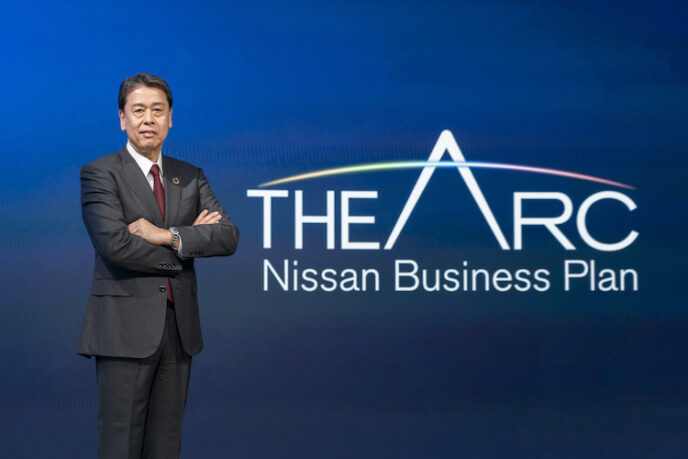
During a press conference detailing its latest global initiatives, Nissan Motor Co. president Makoto Uchida confirmed that a replacement for the evergreen Nissan Navara one-tonne pick-up will come to Oceania.
In its new business plan, The Arc, Nissan says it will launch a one-tonne pick-up and introduce a C-segment crossover EV in the Oceania region, which includes Australia and New Zealand, by the 2026 fiscal year.
The Arc is focused on a broad product offensive, increased electrification, new approaches to engineering and manufacturing, new technologies, and strategic partnerships to increase global unit sales and improve profitability.
Nissan plans to launch 30 new models over the next three years, of which 16 will be electrified, and 14 will be ICE models to meet the diversified customer needs in markets where the pace of electrification differs. Nissan plans to launch 34 electrified models from fiscal year 2024 and 2030 to cover all segments, with the model mix of electrified vehicles expected to account for 40% globally by fiscal year 2026 and rise to 60% by the end of the decade.
The plan is positioned as a bridge between the Nissan NEXT business transformation plan running from fiscal* 2020 through fiscal 2023 and Nissan Ambition 2030, the company’s long-term vision.
Under the two-part plan, Nissan will first take actions to ensure volume growth through a tailored regional strategy and prepare for an accelerated transition to EVs, supported by a balanced electrified/ICE product portfolio, volume growth in major markets and financial discipline.
Nissan wants to lift annual sales by 1 million units and increase its operating profit margin by more than 6% by the end of fiscal year 2026. This will pave the way for the second part of the plan to enable the EV transition and realise long-term profitable growth. By fiscal year 2030, Nissan sees a revenue potential of 2.5 trillion yen from new business opportunities.
EV competitiveness
By developing EVs in families, integrating powertrains, utilising next-generation modular manufacturing, group sourcing, and battery innovations, Nissan aims to reduce the cost of next-generation EVs by 30% (when compared to the current model Ariya crossover) and achieve cost-parity between EVs and ICE models by fiscal year 2030.
In family development alone, the cost of subsequent vehicles—those developed based on the primary vehicle in the family—can be reduced by 50%, the variation of trim parts reduced by 70%, and the development lead time shortened by four months. By adopting modular manufacturing, the vehicle production line will be shortened, reducing the production time per vehicle by 20%.
Strategic partnerships
Nissan will continue to leverage its alliance with Renault and Mitsubishi Motors in Europe, LATAM, ASEAN, and India. In China, Nissan will fully utilise its local assets to meet the needs of China and beyond; it will also explore new partnerships in Japan and the U.S. Batteries will be developed and sourced with partners to bring 135-gigawatt hours of global capacity.








